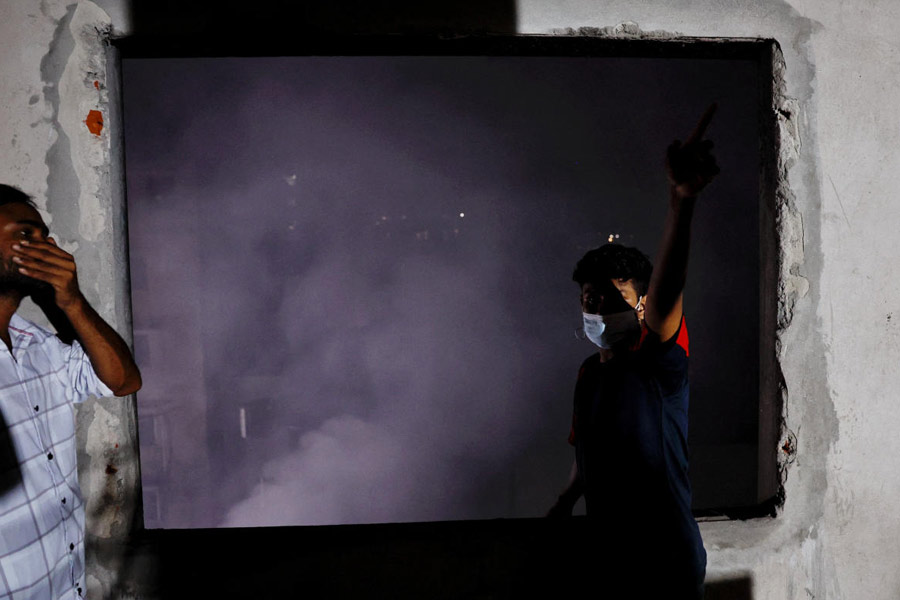Over 100 Pakistani soldiers were killed during a four-day military clash with India in May, according to Indian officials, following Operation Sindoor.
More than 100 Pakistani soldiers were killed in skirmishes with the Indian Army along the Line of Control (LoC) during the four-day military confrontation between the two countries in May during Operation Sindoor which was “a fusion of India’s military precision, diplomatic agility, informational superiority, and economic leverage,” a top general said on Tuesday, addressing military leaders from 32 countries.
Islamabad revealed its casualty figures unwittingly in its August 14 Independence Day awards’ list, said deputy chief of army staff (strategy) Lieutenant General Rajiv Ghai who also holds the post of director general military operations (DGMO).
“After the terror targets were struck by the Indian Army and Indian Air Force, there was cross-border firing from Pakistan immediately. Ceasefire violations spiked and this carried on for a while. Our initial estimate was 35-40 (Pakistani) casualties, but the Pakistanis, possibly unwittingly, let out in their own awards list on August 14...the number of posthumous awards that they awarded suggested over 100 casualties on the LoC,” said Ghai, who the DGMO when the clash took place.
Operation Sindoor marked New Delhi’s direct military response to the April 22 Pahalgam terror attack in which 26 people were killed. India launched the operation in the early hours of May 7 and struck terror and military installations in Pakistan and Pakistan-occupied Kashmir (PoK). Between the launch of the operation and the ceasefire on May 10 evening, Indian forces bombed nine terror camps in Pakistan and PoK, killing at least 100 terrorists, and the IAF struck targets at 13 Pakistani airbases and military installations.
Addressing senior military leadership of United Nations Troop Contributing Countries (UNTCC) during the inaugural session of the three-day-chiefs’ conclave, Ghai gave granular details of the Indian action during the operation and how it brought the Pakistani military on its knees.
“Our military actions were targeted, controlled, non-escalatory, and openly acknowledged to maintain our credibility. We also made sure we put into place critical and significant conventional measures to apply pressure. We carried out some significant and telling forward deployments and extended our punitive reach to unprecedented levels,” he said.
Ghai was among the top officials who briefed the media after the four-day military clash.
In the early hours of May 7, the IAF struck two terror sites at Markaz Subhanallah in Bahawalpur and Markaz Taiba near Muridke, both in Pakistan’s Punjab province, while the army hit targets at seven places, including Mehmoona Joya in Sialkot, Sawai Nala and Syed Na Bilal in Muzaffarabad, Gulpur and Abbas in Kotli, Barnala in Bhimber, and Sarjal.
During May 9-10, the IAF struck military targets in Rafiqui, Murid, Chaklala, Rahim Yar Khan, Sukkur, Chunian, Pasrur, Sialkot, Skardu, Sargodha, Jacobabad, Bholari and Malir Cantt in Karachi.
He said had Pakistan decided to take matters any further, it would have been catastrophic for the neighbour not only from the sea but from other dimensions as well, referring to the navy’s readiness to strike targets on the day the Pakistan DGMO spoke on phone with Ghai seeking a ceasefire.
The Indian military, he said in his 20-minute address, had “war-gamed” the conflict four to five steps ahead of the action that was unfolding at a particular moment.
He touched upon how India had responded with large-scale mobilisation of the army under Operation Parakram after the 2001 Parliament attack, the surgical strikes after the 2016 Uri attack and the Balakot air strikes following the Pulwama suicide attack in 2019, and how the retaliation for Pahalgam was different.
“This time it was because of the intensity and magnitude of events that took place in Pahalgam that we were compelled into the kind of action you are now well familiar with.... Every time we have been hit by terror we have tried to be different. It was different this time too. So we went into the heartland of Pakistan and that’s how we achieved the surprise that we did,” he said.
Ghai gave details of the actions by the IAF, reiterating what chief of the air staff Air Chief Marshal AP Singh recently said. On October 3, the IAF chief said Pakistan lost as many as 12 to 13 aircraft, including fighter jets such as US-made F-16s and Chinese-origin JF-17s, to the IAF’s precision strikes on ground and in the air during Operation Sindoor.
At his annual press conference, Singh said there were “signs” that India destroyed 6-7 aircraft in its ground strikes on Pakistan airfields and another six jets in the air. He also dismissed Islamabad’s claims of downing Indian jets as “fanciful tales” aimed at delivering a message to its domestic audience. It was the first time that a senior military leader has disclosed that the number of Pakistani jets that India destroyed during Operation Sindoor breached single digits.












